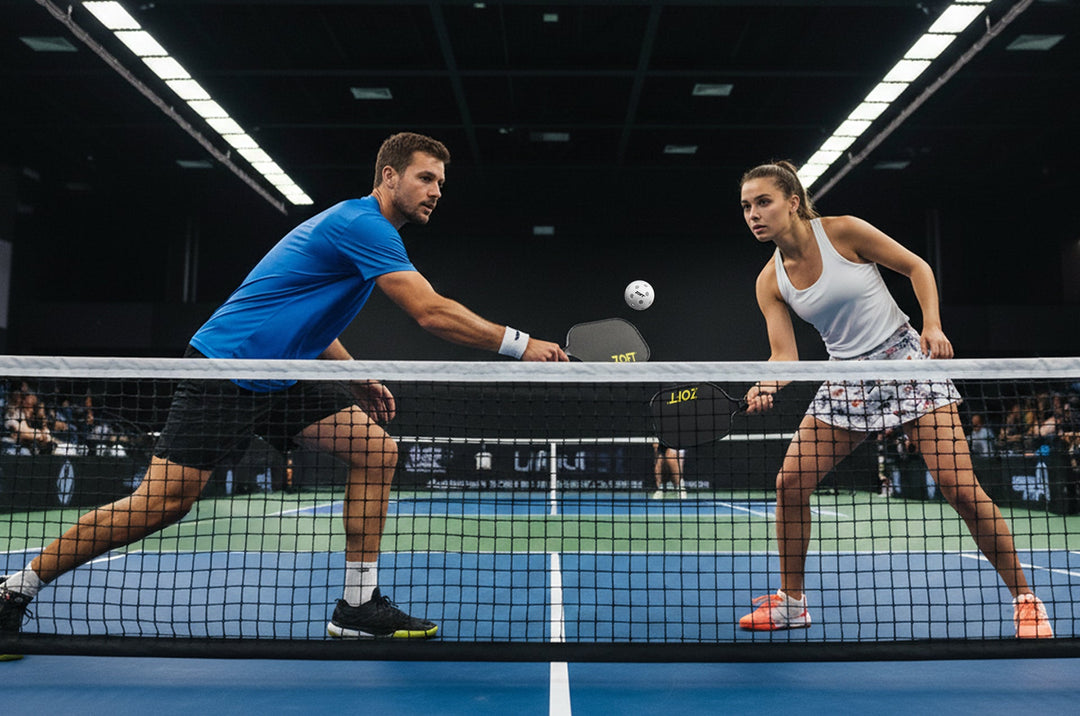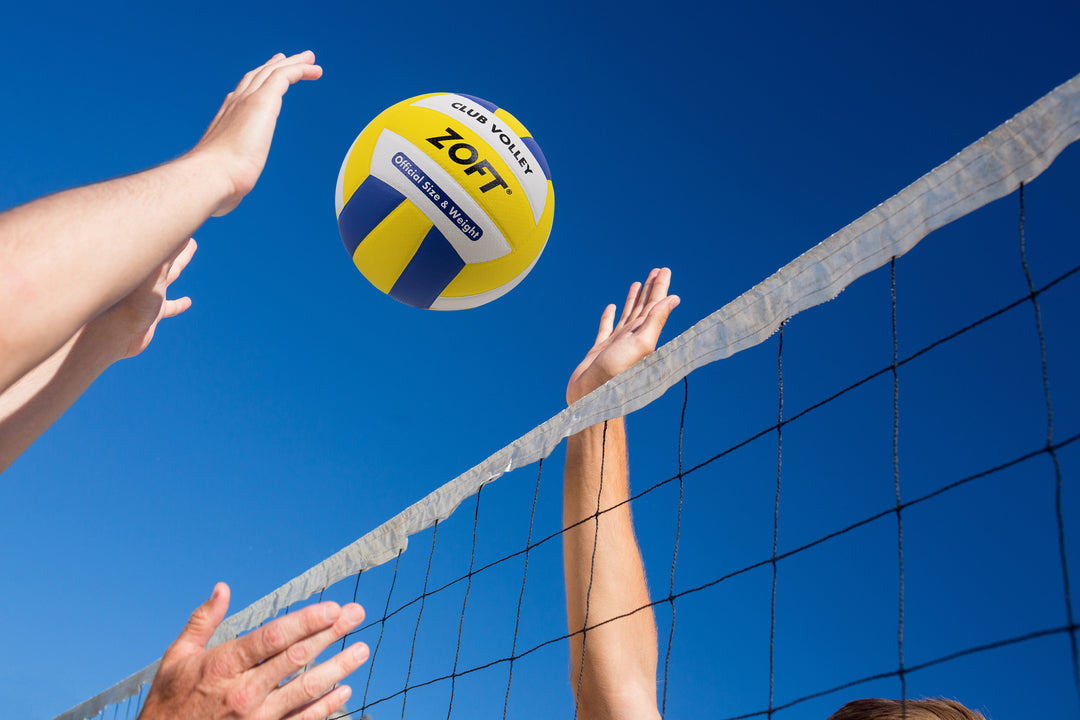Badminton is a captivating sport that combines speed, agility, skill, and strategic gameplay. It is a racquet sport, much like tennis or squash, but it has its unique set of rules and playing techniques. The game involves two opposing players (singles) or two opposing pairs (doubles), aiming to hit a shuttlecock across a net and into their opponent's court.
Originating over 2000 years ago, badminton has gained immense popularity worldwide due to its accessibility and dynamic nature. Whether you're playing it professionally or as a recreational activity, badminton offers a fantastic way to improve your fitness levels while having fun.
If you are a badminton beginner, understanding the basics of badminton is crucial. This game is not just about hitting the shuttlecock as hard as possible; it's about precision, strategy, and fitness. Learning the fundamentals will not only improve your technique but also enhance your overall performance. It provides a solid foundation upon which you can build more complex skills and tactics. Moreover, knowing the basics reduces the risk of injuries and makes the game more enjoyable.
In this guide, we'll explore the world of badminton, from understanding the game rules to choosing the right gear and mastering the serve. We aim to equip you with the knowledge and tips you need to kickstart your journey into becoming a proficient badminton player.
Understanding the Game: Badminton Basics
Badminton is a fast-paced sport that requires a combination of speed, precision, and strategy. It's a game that can be enjoyed by two players in a singles match or four players in a doubles match. Let's take a closer look at the rules and scoring system of badminton to better understand this dynamic sport.
Badminton Rules and Scoring System
A badminton match consists of the best of three games, with each game played to 21 points. Every time there is a serve, a point is scored — regardless of whether it's the serving side or the receiving side that wins the rally. This scoring method adds a layer of excitement to the game as every rally counts towards the final score.
If a game reaches 20-20, the side that scores two consecutive points or the side which first reaches 30 points, wins that game. This rule ensures a thrilling end to each game as it could swing either way with just a point or two.
The shuttlecock must pass over the net and land within the opposing side's court boundaries to score a point. Players are not allowed to touch the net with their body or racket at any point during the game.
The Role and Importance of Badminton Players
In badminton, every player plays a crucial role. In a singles match, the player needs to command the entire court, maneuvering their opponent to create openings and score points. Their role involves serving, returning, smashing, and strategically placing the shuttlecock where it would be difficult for the opponent to return.
In a doubles match, coordination between the two players is key. Each player has specific responsibilities depending on whether they are serving or receiving. Communication, understanding, and teamwork are vital for success in doubles matches.
Whether in a singles or doubles match, a badminton player must possess agility, speed, power, precision, and stamina. But beyond physical skills, a player needs to understand the game's tactical aspects, such as when to attack, defend, or play a waiting game.
In essence, badminton players are the heart of the game. Their skills, strategies, and spirit not only determine the outcome of a match but also make the game thrilling and enjoyable for spectators.
Choosing Your Badminton Gear
When stepping into the world of badminton, one of the first things you'll need to consider is your gear. The right equipment can significantly affect your performance and enjoyment of the game. Let's delve into the different types of badminton gear and how to choose the right ones for you.
Types of Badminton Gear
Your basic badminton gear consists of a racket, shuttlecock, shoes, and appropriate clothing.
Racket: The racket is your primary tool in the game. It's used to hit the shuttlecock and comes in various materials, weights, and designs.
Shuttlecock: This is what you hit back and forth over the net. Shuttlecocks can be made from synthetic materials or real feather.
Shoes: Badminton requires a lot of quick movements, so a pair of lightweight, comfortable shoes with good grip is essential.
Clothing: Comfortable, breathable sportswear that allows for easy movement is recommended.
Choosing a Badminton Racket for Beginners
Choosing a racket is an important decision as it directly influences your gameplay. Here are some factors to consider:
Weight: A lighter racket (around 85-89g) is usually recommended for beginners as it's easier to control and can help prevent injuries.
String Tension: Lower string tension (20-23 lbs) is ideal for beginners as it provides a larger sweet spot (the optimal spot to hit the shuttlecock) and forgives off-center hits.
Grip Size: The right grip size ensures comfort and control when handling the racket. It largely depends on the size of your hand; you should be able to comfortably wrap your fingers around the handle.
Mastering the Serve: The First Step in Every Badminton Game
Serving in badminton is where the game begins and it's quite different from other racquet sports. The serve must be delivered underhand, meaning the racket must strike the shuttlecock below the server's waist level. The flight of the shuttlecock from the serve must be upwards, ensuring it lands within the boundaries of the opposing court's service box.
In singles, the server serves from the right court when their score is even, and from the left court when their score is odd. In doubles, there's a more complex rotation but the serving also starts from the right court.
There are two main types of serves used in badminton: the high serve and the low serve. The high serve is used primarily in singles play to push your opponent back into their court, while the low serve is common in doubles play to prevent your opponents from making an aggressive return.
Tips for Improving Your Serve
Practice Consistency: Consistently practicing your serve will help improve accuracy and control. Try to aim for a specific spot on the opponent's court and adjust your serve based on where the shuttlecock lands.
Vary Your Serves: Mixing up high and low serves, as well as changing the direction of your serve, can keep your opponent guessing and off-balance.
Focus on Technique, Not Power: A good serve is not about power but about technique and placement. Work on hitting the shuttlecock with the correct part of the racket and aiming it accurately.
Keep a Relaxed Grip: A relaxed grip allows for better control and lessens the chance of injury. The grip should be firm enough to not let the racket slip, but not so tight that it restricts movement.
Mastering the serve in badminton can give you a significant advantage in the game. It sets the tone for the rally, and a well-placed serve can make it difficult for your opponent to make an aggressive return, providing you with opportunities to take control of the game.
Developing Essential Skills for Badminton Players
Mastering the game of badminton necessitates a blend of physical prowess, strategic acumen, and consistent practice. Key skills to develop include footwork, serving, clears, smashes, net play, endurance, and strategic thinking. Footwork drills such as side-steps, skipping, and ladder exercises can enhance agility, balance, and speed. Regularly practicing both low and high serves can improve consistency and precision. Clears and smashes, defensive and offensive shots respectively, should be practiced for power, accuracy, and timing. Net play, which requires precision and a gentle touch, can add pressure on your opponent. Incorporating cardio workouts can help build stamina for enduring long matches. Lastly, honing your strategic thinking through watching professional matches and discussing tactics with experienced players or coaches can greatly enhance your game. Consistency is key in improving these skills - start with the basics and gradually add more complex techniques to your training regimen. Patience is crucial; remember, every great player was once a beginner
Embarking on your badminton journey is an exciting endeavor. As a beginner, it's crucial to understand that mastery comes with time and practice. The skills you need to develop - footwork, serving, clears, smashes, net play, endurance, and strategic thinking - all require dedication and patience. But remember, every swing of the racket, every drill, and every game, brings you one step closer to improvement.
It's important not to lose sight of the fact that badminton, at its core, is a game meant to be enjoyed. Yes, strive for excellence, but also remember to have fun. Play with friends, join a local club, and participate in friendly tournaments. Embrace the adrenaline rush of a well-played rally, the satisfaction of a perfect serve, and even the lessons from a match lost.








